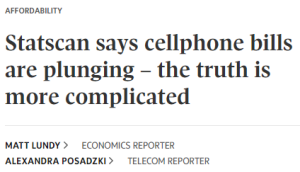Taming technology authoritarianism
Is it time to tame “technology authoritarianism”?
Is that even possible?
Yesterday, the Canadian government introduced its long-promised Online Harms Act, with the promise of a focus on protecting children and youth from the “dangers of the internet”. I’ll have more on some of the specifics as the text of the legislation works its way through committee review.
From some of the earliest days of this blog, I have been writing about “Taming the wild west” of what I called the anarchy of the internet. At the time, I had a particular concern with the “fine balance between the right to free speech and the right of individuals not to be the objects of hate and violent speech”.
A recent article in The Atlantic caught my eye. In “The Rise of Technoauthoritarianism”, Adrienne LaFrance claims the technocrats of Silicon Valley are “leading an antidemocratic, illiberal movement” and government intervention is required.
She writes that she long believed that regulation was unnecessary, “in part because I was not (and am still not) convinced that the government can do so without itself causing harm… I’d much prefer to see market competition as a force for technological improvement and the betterment of society.”
in recent years, it has become clear that regulation is needed, not least because the rise of technocracy proves that Silicon Valley’s leaders simply will not act in the public’s best interest. Much should be done to protect children from the hazards of social media, and to break up monopolies and oligopolies that damage society, and more. At the same time, I believe that regulation alone will not be enough to meaningfully address the cultural rot that the new technocrats are spreading.
Why the epipheny? Why can’t market forces provide sufficient discipline? LaFrance reminds us that Silicon Valley “attracts many immensely talented people” (including half of my kids), working to do good.
Even the most deleterious companies have built some wonderful tools. But these tools, at scale, are also systems of manipulation and control. They promise community but sow division; claim to champion truth but spread lies; wrap themselves in concepts such as empowerment and liberty but surveil us relentlessly.
Read the full article.
I don’t agree with every claim made by LaFrance, but it is a well written, thought provoking piece. “Many Americans fret — rightfully — about the rising authoritarianism among MAGA Republicans, but they risk ignoring another ascendant force for illiberalism: the tantrum-prone and immensely powerful kings of tech.
Two weeks ago, US Congress summoned the CEOs of leading technology firms to discuss “Big Tech and the Online Child Sexual Exploitation Crisis.” Pressured under questioning, at one point Meta CEO Mark Zuckerberg apologized to victims. “No one should have to go through the things that your families have suffered.”
Although Canada has not yet introduced its long-promised Online Harms legislation, it has passed two of the bills promised under its Digital Charter:
- C-11: “The Online Streaming Act modernizes the Broadcasting Act and helps ensure Canadian stories and music are widely available on streaming platforms to the benefit of future generations of artists and creators in Canada.”
- C-18: “The Online News Act aims to ensure that dominant platforms compensate news businesses when their content is made available on their services.”
But, as I asked last Fall, are we “Losing sight of the target”.
And, if indeed it is time to tame “technology authoritarianism”, how do we tame them?

